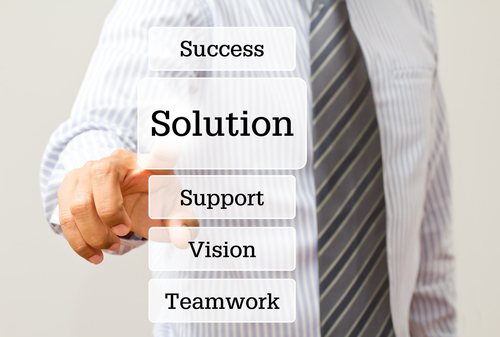IT MANAGED SERVICES & SOLUTIONS

On the list of challenges that CIO's often encounter is the management of their infrastructure.
It can be difficult to coordinate the different infrastructure groups including: networking, engineering, desk-side field support, service desk, security, and network monitoring.
How do you really manage your entire infrastructure seamlessly?
One of the most crucial factors of a service desk operation is the opportunity to integrate across these different vertical silos and bring them together as one functioning unit. The service desk becomes the brain of the operation. It’s the incoming channel through which all issues, problems, requests, and changes hit the entire IT enterprise. The question is, how do you leverage that data since it can be leveraged in multiple ways? The service desk itself is leverageable to drive improvement through that area, but it also gives you the repository of data to drive improvement everywhere. When you integrate these service lines so that your desktop, network monitoring, and help desk components are all integrated, they piece together very well because it’s really just an extension.
When you stop and consider the service desk, think of the end user that is experiencing a problem somewhere in the world. We work to resolve that problem remotely. We work through a Tier 2 remote infrastructure management component of the service desk which serves as a bridge into your desktop support. If you look at it horizontally across that spectrum, it’s one set of processes you can use to drive resolution to users as fast as possible. It’s a very cost-effective way to do this because once they’re integrated you have intermediate layers that drive consistency.
When you layer network monitoring on top of service desk operations, groups of agents answer calls to support people. We can drive more work into that group of agents and allow them to work on a network monitoring component while they actually take live support calls. At the same time, they can work on security and account administration. You get integrated processes across these different infrastructure verticals, and you have lower management overhead because you’re able to actually scale that across the entire practice.
One thing that Bell Techlogix is steeped in is integrating these different service lines to drive output and value to our client side. It really is a differentiator for us because a lot of our competitors, especially our large competitors, are still attempting to manage infrastructures vertically. However, for best results, you’ve got to go to the person at the top of each vertical. Bell Techlogix is a little bit different in this respect. We’ve got a single point of contact that can drive and facilitate change and operations across the entire spectrum.
Contact us for more information to streamline your company’s infrastructure management.